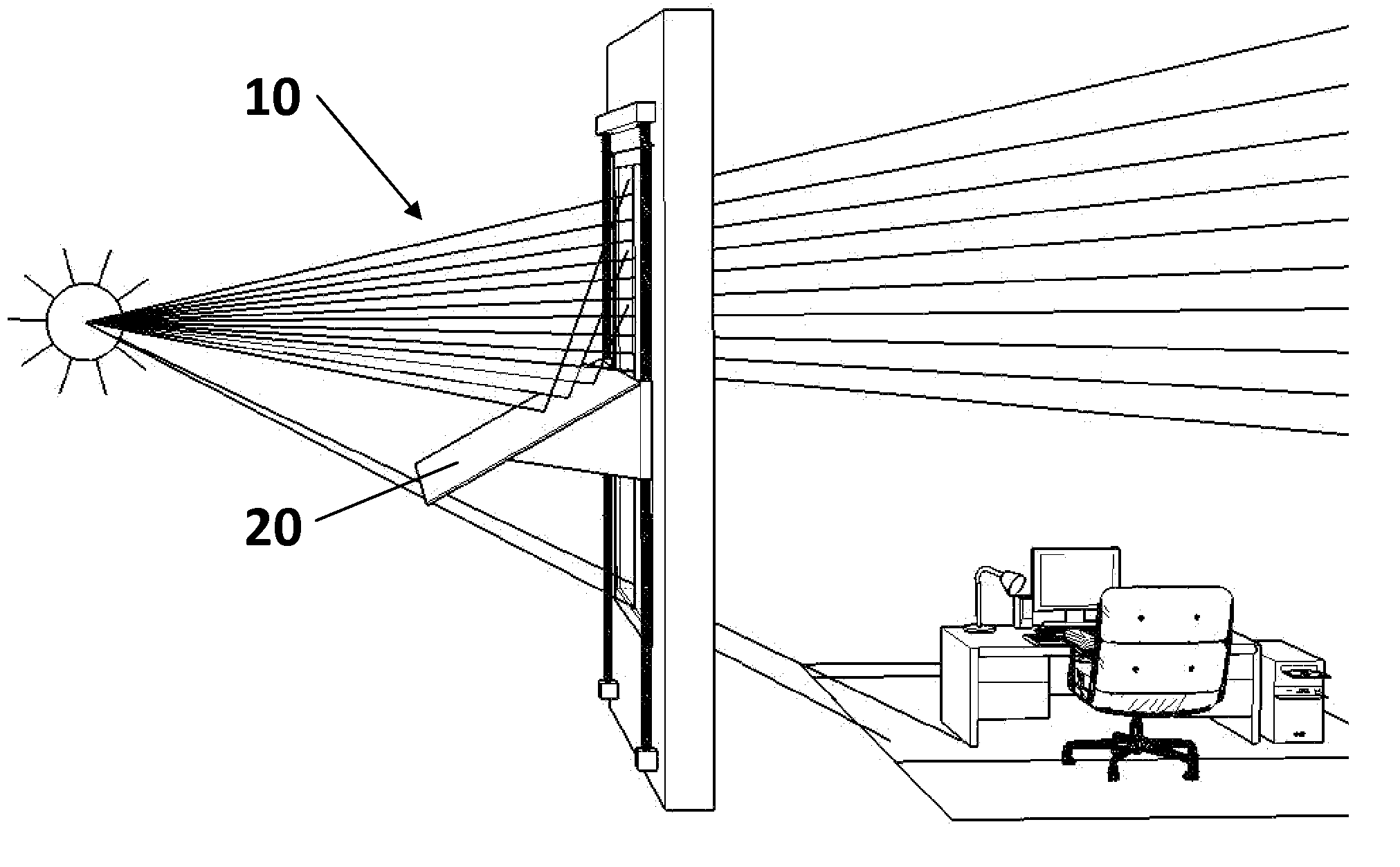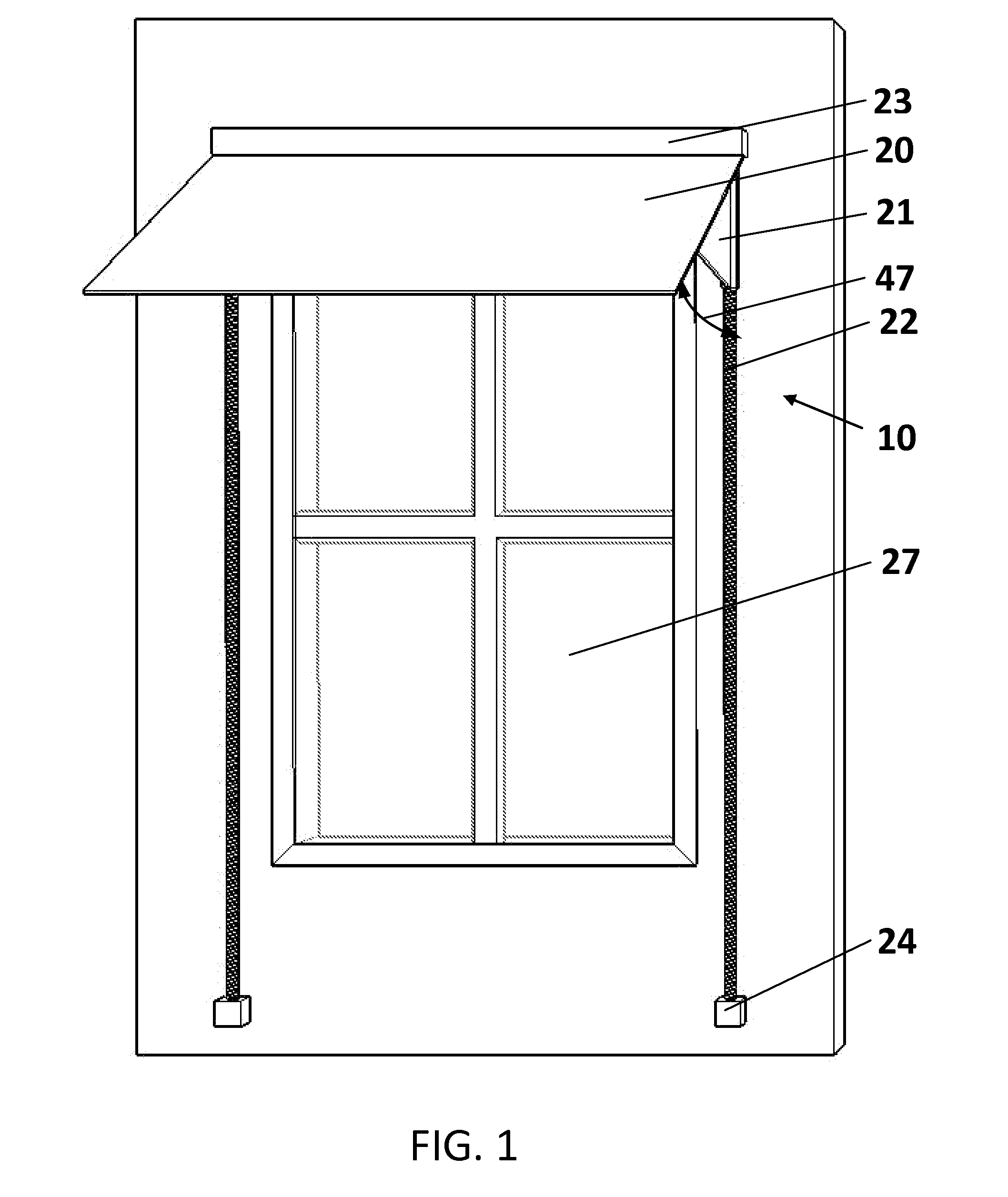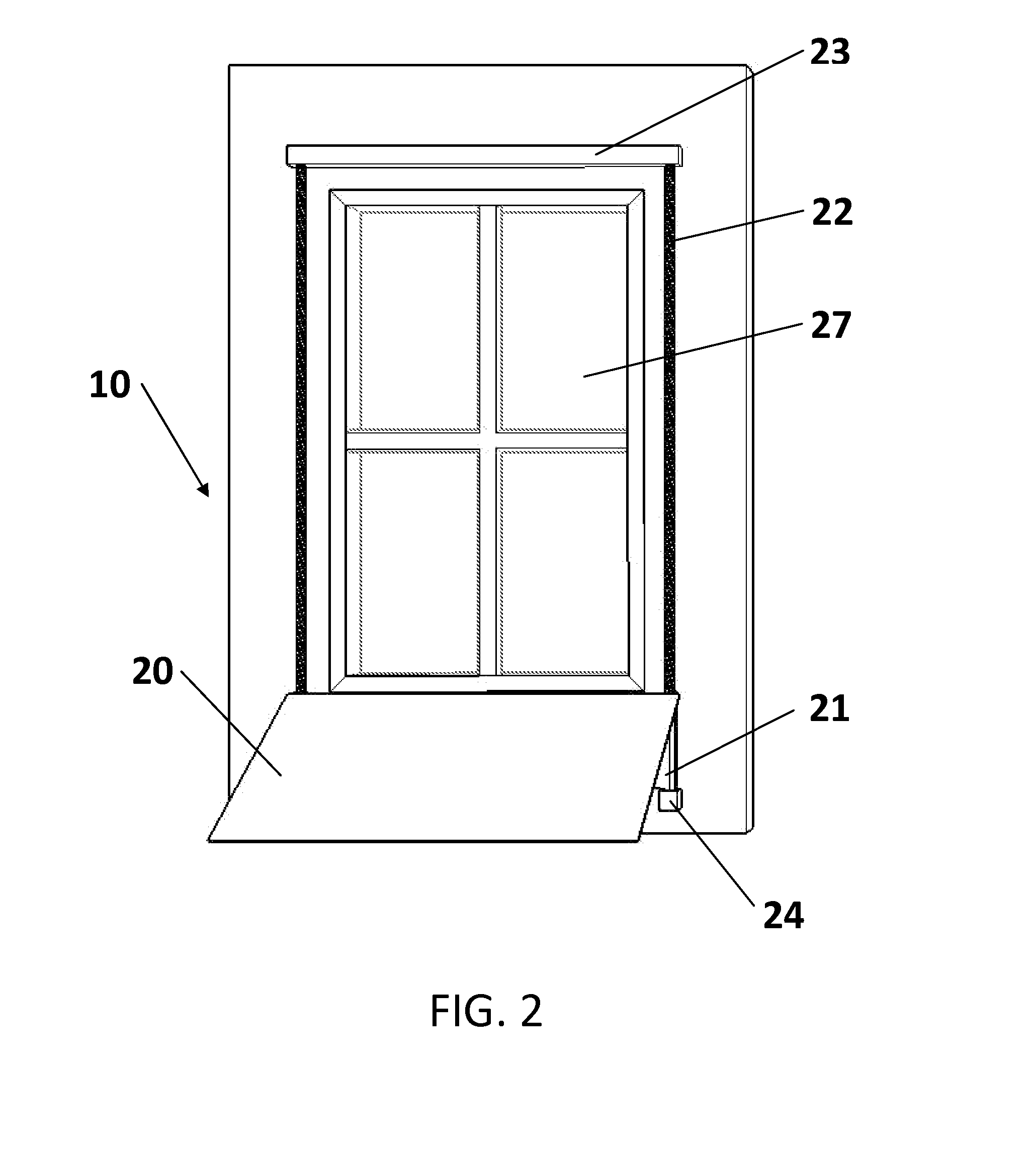Adjustable All-Season Window Awning/Light Shelf and Operating Mechanism Therefor
a technology for all-season window awnings and operating mechanisms, which is applied in the direction of sunshades, doors/windows, constructions, etc., can solve the problems of reducing the aesthetic appeal of such awnings, requiring periodic replacement of fabrics, and not being durable enough to last a long time, so as to achieve convenient operation and easy operation by manual or power.
- Summary
- Abstract
- Description
- Claims
- Application Information
AI Technical Summary
Benefits of technology
Problems solved by technology
Method used
Image
Examples
Embodiment Construction
[0031]Referring to the drawings, in particular to FIGS. 1 and 2, where an adjustable window awning constructed in accordance with the present invention is generally designated by a numeral 10, the awning includes a canopy 20 supported by support elements 21. The support elements 21 are engaged with drive screws 22 connected with a housing 23 at the top and with bottom supports 24.
[0032]As shown in FIG. 3, each drive screw 22 is connected via a transmission gear 25 with a drive shaft 26.
[0033]To lower the canopy 20 from its top position depicted in FIG. 1 to its bottom position depicted in FIG. 2, the drive shaft 26 is rotated by using a manual drive gear or an electric motor (not shown). Rotation of the drive shaft 26 causes the drive screws 22 to rotate simultaneously and move down the support elements 21 along with the canopy 20.
[0034]FIG. 4 shows sunrays reflecting from the canopy 20 into a window, when the canopy is in its bottom position, thereby increasing the amount of sunlig...
PUM
 Login to View More
Login to View More Abstract
Description
Claims
Application Information
 Login to View More
Login to View More - R&D
- Intellectual Property
- Life Sciences
- Materials
- Tech Scout
- Unparalleled Data Quality
- Higher Quality Content
- 60% Fewer Hallucinations
Browse by: Latest US Patents, China's latest patents, Technical Efficacy Thesaurus, Application Domain, Technology Topic, Popular Technical Reports.
© 2025 PatSnap. All rights reserved.Legal|Privacy policy|Modern Slavery Act Transparency Statement|Sitemap|About US| Contact US: help@patsnap.com



